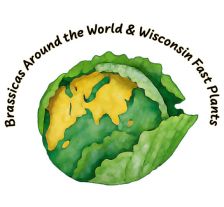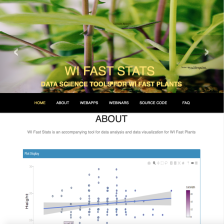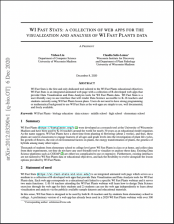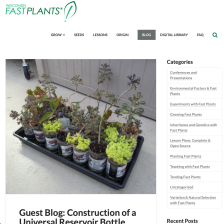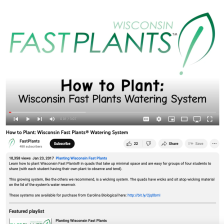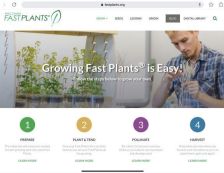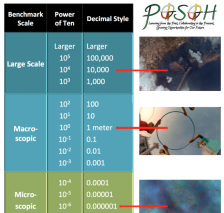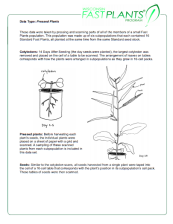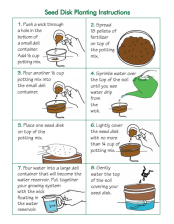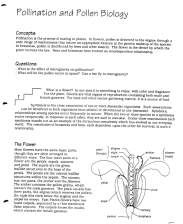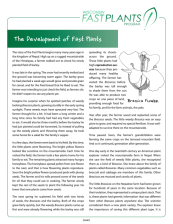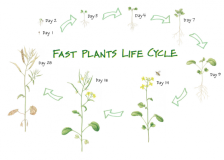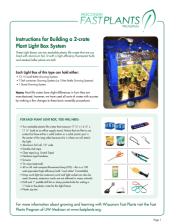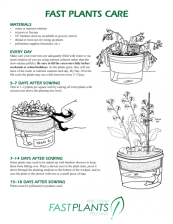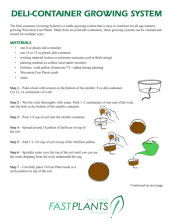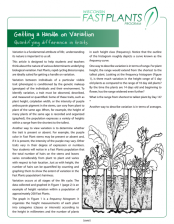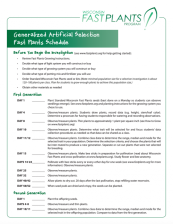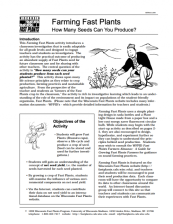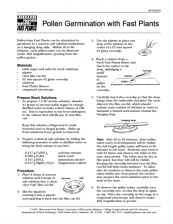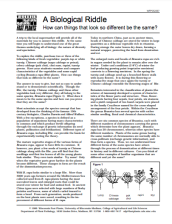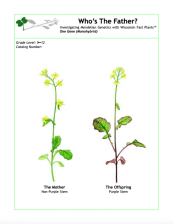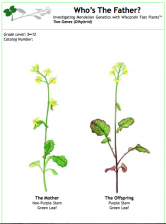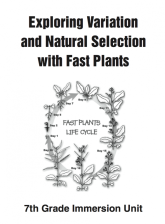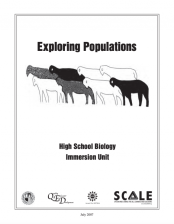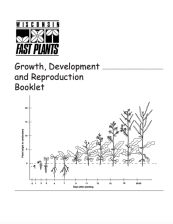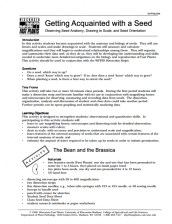Browse Resources
(8 classifications) (41 resources)
Resources | |
|---|---|
This blog post from the Fast Plants team addresses the question "can bee sticks sting?" (no, bee sticks cannot sting) and provides information on the use of bee sticks for pollination of Fast Plants in the classroom.
This investigation begins with a phenomenon that is evidenced in most every produce aisle: Many of the vegetables that botanists classify as Brassica look and taste different. This investigation aligns with middle and high school Next Generation Science Standards as well as with agricultural science...
This comprehensive Open Source lesson plan is designed for Kindergarten through Middle School level students to learn about life cycles, plants needs, and plant structures & their functions through hands-on investigations with Wisconsin Fast Plants. Depending on the grade level, students engage at...
WI Fast Stats is a browser-based data analysis and visualization tool that can be used alongside Wisconsin Fast Plants. WI Fast Stats has a set of R-developed unique web apps that corresponds to specific WI Fast Plants webinars and dataset (such as Cotyledon, or Ecosystem), to make data analysis...
This 5-page article is written by Yizhou Liu and Claudia Solis-Lemus and introduces Wisconsin Fast Stats, a collection of R-developed web apps of data analysis and visualization tools for educators that accompany learning activities from Wisconsin Fast Plants. The article covers topics such as...
This blog post, written by Joel Cryer of Bottle Biology, provides instructions to construct an inexpensive, self-watering planter that can be used to grow Wisconsin Fast Plants. The blog covers the materials and tools needed, as well as step-by-step instructions to create a universal reservoir...
This video is provided by Wisconsin Fast Plants, and demonstrates how to plant Fast Plant seeds using a quad-planter and wicking reservoir system. The video gives an overview of the materials necessary to grow plants with this method, and also provides step-by-step instructions guiding the process....
Part of the Fast Plants website, the "Grow" section offers complete instructions for preparing to grow, planting, tending, pollinating, and harvesting Wisconsin Fast Plants seeds. Instructions include text descriptions, photos, videos, and PDF instructions that can be downloaded, including a...
This is a printable poster resource developed by a collaboration of educators in the POSOH Project for teaching about systems and scale. This poster correlates with an excerpt from the video Cosmic Voyage about systems and scale, narrated by Morgan Freeman. A debrief discussion of that video excerpt...
Sign up for a free account on the Gizmo website (https://www.explorelearning.com/index.cfm?method=Controller.dspFreeAccount) for free access to two simulations that were collaboratively developed by the teams at Explore Learning and the Wisconsin Fast Plants Program of the University of...
These data sets were meticulously collected by Dr. Paul Williams in an investigation in which we were interested in learning about how nutrient limitations effect a variety of easily observable and measureable Fast Plant traits. Observations were made and recorded at different points in the plants'...
Illustrated instructions for constructing and planting seed disks in the Fast Plants deli-container growing system. This is a stable growing system that is easy to construct for all age learners, and works well for growing Wisconsin Fast Plants. Made from recycled deli-containers, these growing...
Pollination and Pollen Biology
This is "The Story of Fast Plants" - a short story of the origins of Brassicas and the work of Dr. Paul Williams, developing Brassica rapa. Reading level ~7th grade.
This is a jpg version of the Wisconsin Fast Plants life cycle that is found on our website. These Fast Plant illustrations were drawn by Alison Schroeer.
These instructions describe how to construct a plant light box from two stackable plastic file crates that are cut, lined with aluminum foil and lit with a 40/42-watt CFL bulb. This 3-page document includes a complete materials list and 12-step assembly instructions with photographs that illustrate...
This four-page handout explains the key steps to follow when caring for Wisconsin Fast Plants (Brassica rapa) throughout their life cycle, from sowing through harvesting seeds. This handout includes information about the materials needed, methods for tending and caring for your plants, and...
Illustrated instructions for constructing and planting in the Fast Plants deli-container growing system. This is a stable growing system that is easy to construct for all age learners, and works well for growing Wisconsin Fast Plants. Made from recycled deli-containers, these growing systems can be...
On YouTube: Time lapse video of Wisconsin Fast Plants growing from planted seed through flowering to seed production, set to music! Time lapse just makes them grow a little faster than they do in real life -- this video shows approximately 40 days, the time it takes to produce the next generation.
This article is designed to help students and teachers think about the nature of various determinants underlying biological variation. Teachers facilitating any selection investigation will find this background information helpful, including those planning for the AP Biology Lab 1 of Big Idea 1:...
This fill-in-the-blank timeline is a planning tool for teachers to use when figuring out when to begin the steps associated with conducting a two-generation artificial selection experiment using Fast Plants. Teachers preparing for any selection experiment will find this timeline helpful, including...
This Farming Fast Plants activity introduces a classroom investigation that is easily adaptable for all grade levels and designed to engage teachers and students as investigators. The activity has the practical outcome of producing an abundant supply of Fast Plants seed for future classroom use and...
Protocol for germinating Fast Plants pollen in a sucrose-salt solution
Turnips, Chinese cabbage and Wisconsin Fast Plants (Rbr) look very different. Yet, they actually belong to the same species. This means that they have the same number of chromosomes and they can cross breed and produce fertile offspring. But how can you prove that plants that look so different are...
An article written for children, this reading explains the role of plants as producers. It is written at a grade 4-5 reading level, and it is a good supplement to the evidence that students can observe and record through experimentation with photosynthesis.
In this investigation, students will gather their own evidence to explain how inheritance works. As they observe three generations of Wisconsin Fast Plants, students will unravel a mystery of paternity: What is the father’s phenotype? Is it the same as the mother’s phenotype or the offspring’s...
Download the complete instructions for a high school level inheritance and genetics inquiry, using Wisconsin Fast Plants. In this investigation, students gather their own evidence to explain how inheritance works. As they observe three generations of Wisconsin Fast Plants, students unravel a...
Download this complete and coherently designed, middle school level unit to teach fundamental concepts that underpin the theory of evolution. The unit was collaboratively designed by teachers, college faculty & staff, and the Fast Plants Program at UW-Madison to support student-centered...
This Immersion Unit provides a coherent series of lessons designed to guide students in developing deep conceptual understanding that is aligned with the standards, key science concepts, and essential features of classroom inquiry (as defined by the National Science Education Standards).
Unit...
A 32-page booklet, containing complete instructions for activities at each life cycle stage. The booklet also includes important background information about plant physiology and how to grow Fast Plants. A Growth, Development and Reproduction kit is available. You can also conduct all the...
Description: In this activity students become acquainted with the anatomy and biology of seeds. They will use lenses and scales and make drawings to scale. Students will measure and calculate magnifications and they will begin to understand relationships among these. They will organize and summarize...
| |
| ← Previous | |

